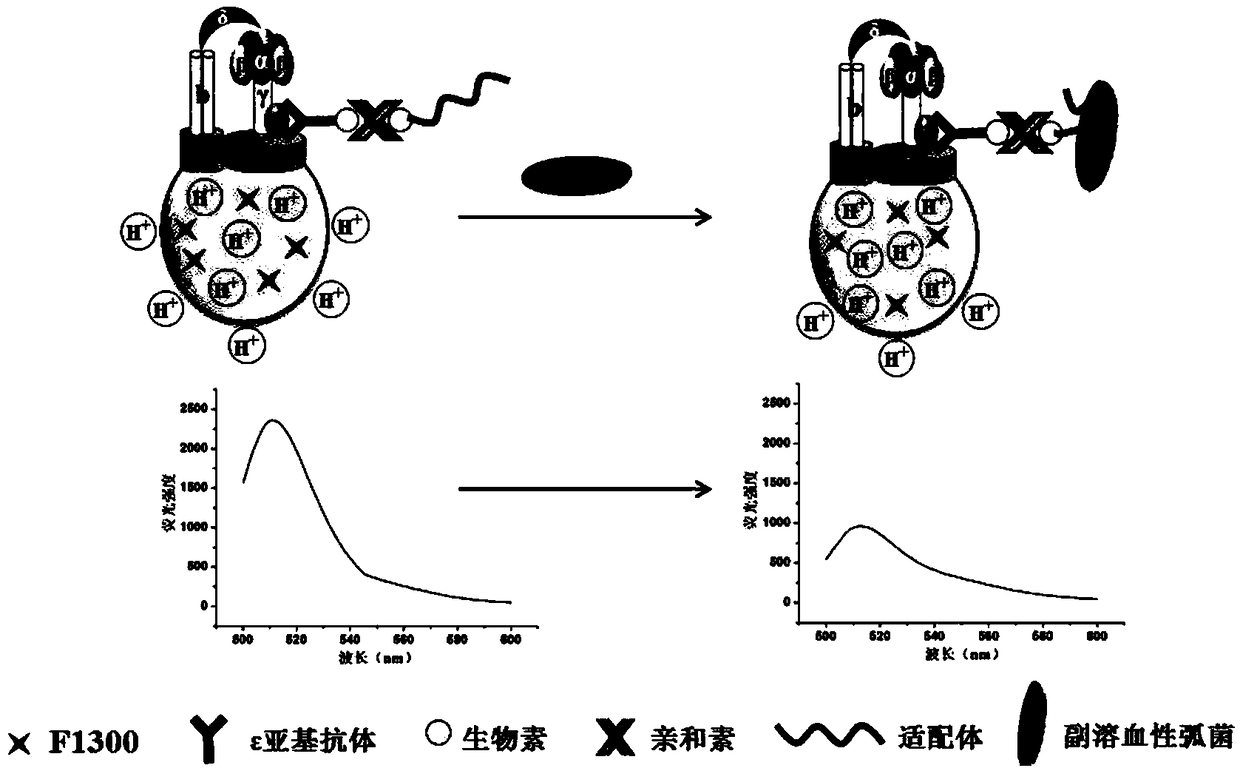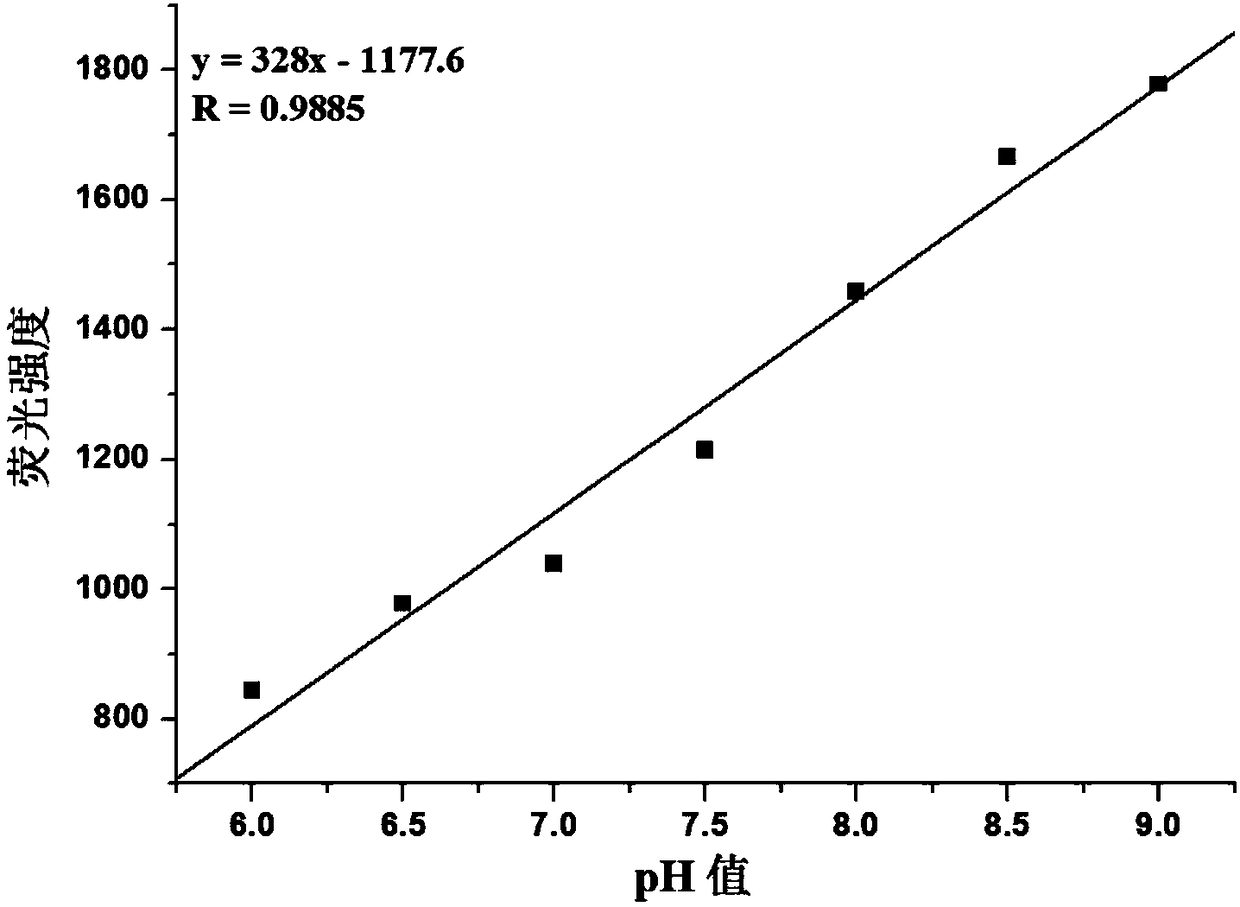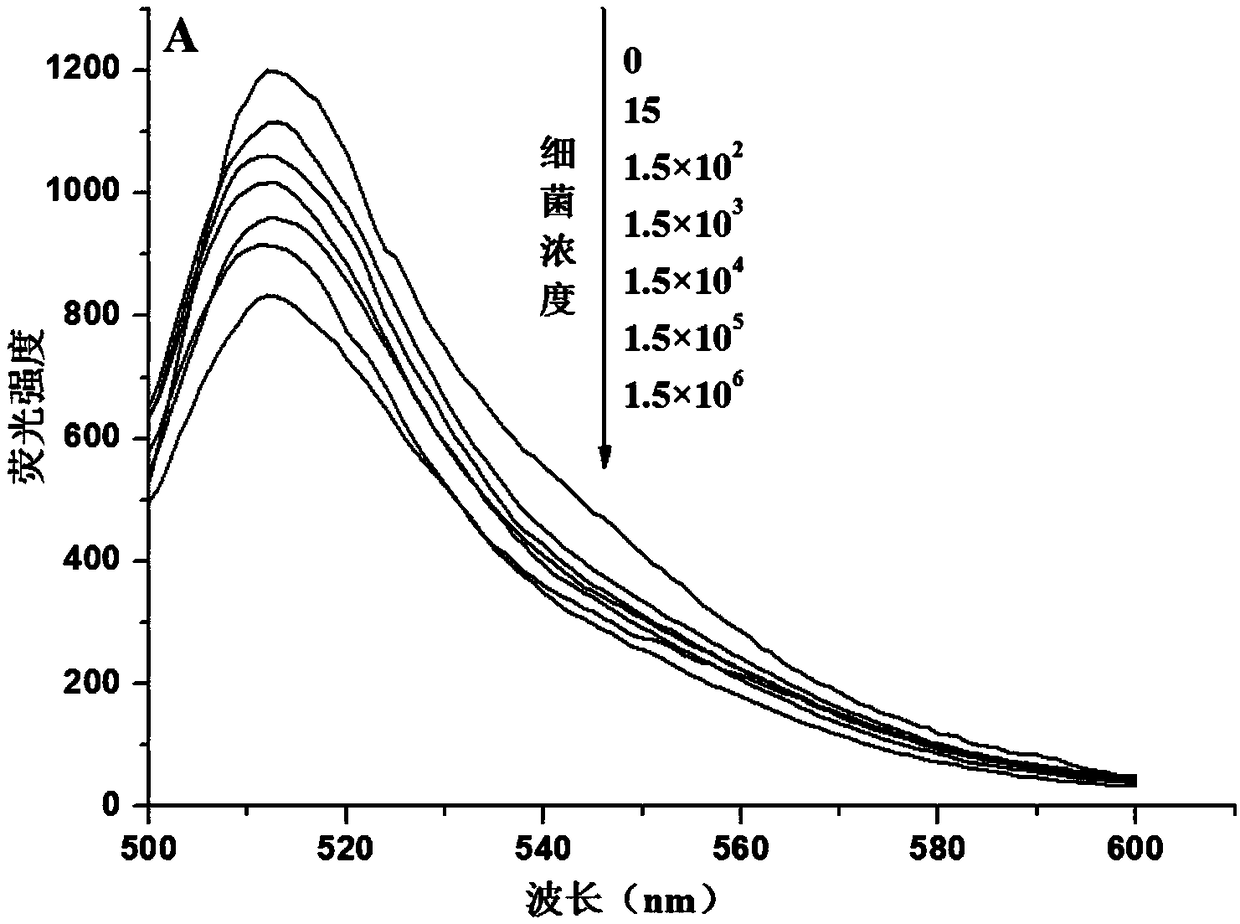Method for detecting Vibrio parahemolyticus based on aptamer identification-molecular motor biosensing
A hemolytic vibrio and molecular motor technology, which is applied in measuring devices, analysis materials, material excitation analysis, etc., can solve the problems that antibodies are easily affected by external conditions, high selectivity requirements, cumbersome operation, etc., and shorten the detection time , broad application prospects and low preparation cost
- Summary
- Abstract
- Description
- Claims
- Application Information
AI Technical Summary
Problems solved by technology
Method used
Image
Examples
Embodiment 1
[0022] Example 1: Construction of a method for detection of Vibrio parahaemolyticus based on aptamer-molecular motor biosensing
[0023] (1) Preparation of chromophore:
[0024] Rhodospirillum rubrum was cultivated in tryptone soybean liquid medium at 26°C and 150r / min for 72h. Then at 4°C, centrifuge at 5000r / min for 30min to collect the bacterial cells. With extraction buffer (20mmol / L Tris-HCl (pH 8.0), 100mmol / L NaCl, 2mmol / L MgCl 2 , 1mmol / L DTT) to resuspend the bacteria, then centrifuge at 8000r / min for 10min at 4°C, and remove the supernatant. The precipitate was resuspended with the above-mentioned extraction buffer, then added with phenylmethylsulfonyl fluoride (final concentration: 1 mmol / L), and sonicated on ice for 30 min. Centrifuge the broken bacteria at 4°C, 25000r / min for 90min, take the supernatant and continue to centrifuge at 4°C, 50000r / min for 90min, the precipitate is the chromophore, which contains F 0 f 1 -ATPase molecular motor.
[0025] (2) Pre...
Embodiment 2
[0035] Embodiment 2: establishment of Vibrio parahaemolyticus standard detection curve
[0036] Take 300 μL of aptamer-molecular motor complex, add 200 μL of Vibrio parahaemolyticus liquid of different concentrations, incubate at 37°C for 1 hour, then centrifuge at 4°C, 15,000 r / min for 30 minutes, discard the supernatant; add 30 μL of ATP to synthesize Buffer (0.1 mM trimethylglycine, 10% glycerol, 5 mM NaH 2 PO 4 , 5 mM MgCl 2 , 0.35mM ADP, 2mM NADH, pH 9.0) were incubated at 37°C for 30min, then 470μL of PBS was added, mixed evenly, and the fluorescence intensity was measured (excitation wavelength 485nm, emission wavelength 512nm). Such as image 3 As shown, when there is no target strain in the system, the load of the molecular motor F0F1-ATPase does not change, so the fluorescence intensity is the largest at this time; when there is Vibrio parahaemolyticus in the system, the aptamer specificity and vibrio binding, making F 0 f 1 - The load of ATPase increases, caus...
Embodiment 3
[0037] Example 3: Detection of Vibrio parahaemolyticus in salmon samples
[0038] Purchase fresh salmon from a local supermarket, take 25g of salmon meat sample and mince, mix and homogenize with 225mL 3% sodium chloride alkaline peptone water for 10min, then filter with a 0.45μm filter membrane, take 200μL of the supernatant to a centrifuge tube as the actual sample, A total of 6 samples were taken, and a known concentration of Vibrio parahaemolyticus was added (the concentration was obtained by plate counting), followed by 300 μL of aptamer-molecular motor complex, and the final concentration of Vibrio parahaemolyticus in the system was 1.5 ×10 2 ~1.5×10 3 cfu / mL, incubate at 37°C for 1h, then centrifuge at 15000r / min for 30min at 4°C, discard the supernatant; add 30μL of ATP synthesis buffer (0.1mM trimethylglycine, 10% glycerol, 5mM NaH 2 PO 4 , 5 mM MgCl 2 , 0.35mM ADP, 2mM NADH, pH 9.0) were incubated at 37°C for 30min, then 470μL of PBS was added, mixed evenly, and ...
PUM
 Login to View More
Login to View More Abstract
Description
Claims
Application Information
 Login to View More
Login to View More - R&D
- Intellectual Property
- Life Sciences
- Materials
- Tech Scout
- Unparalleled Data Quality
- Higher Quality Content
- 60% Fewer Hallucinations
Browse by: Latest US Patents, China's latest patents, Technical Efficacy Thesaurus, Application Domain, Technology Topic, Popular Technical Reports.
© 2025 PatSnap. All rights reserved.Legal|Privacy policy|Modern Slavery Act Transparency Statement|Sitemap|About US| Contact US: help@patsnap.com



